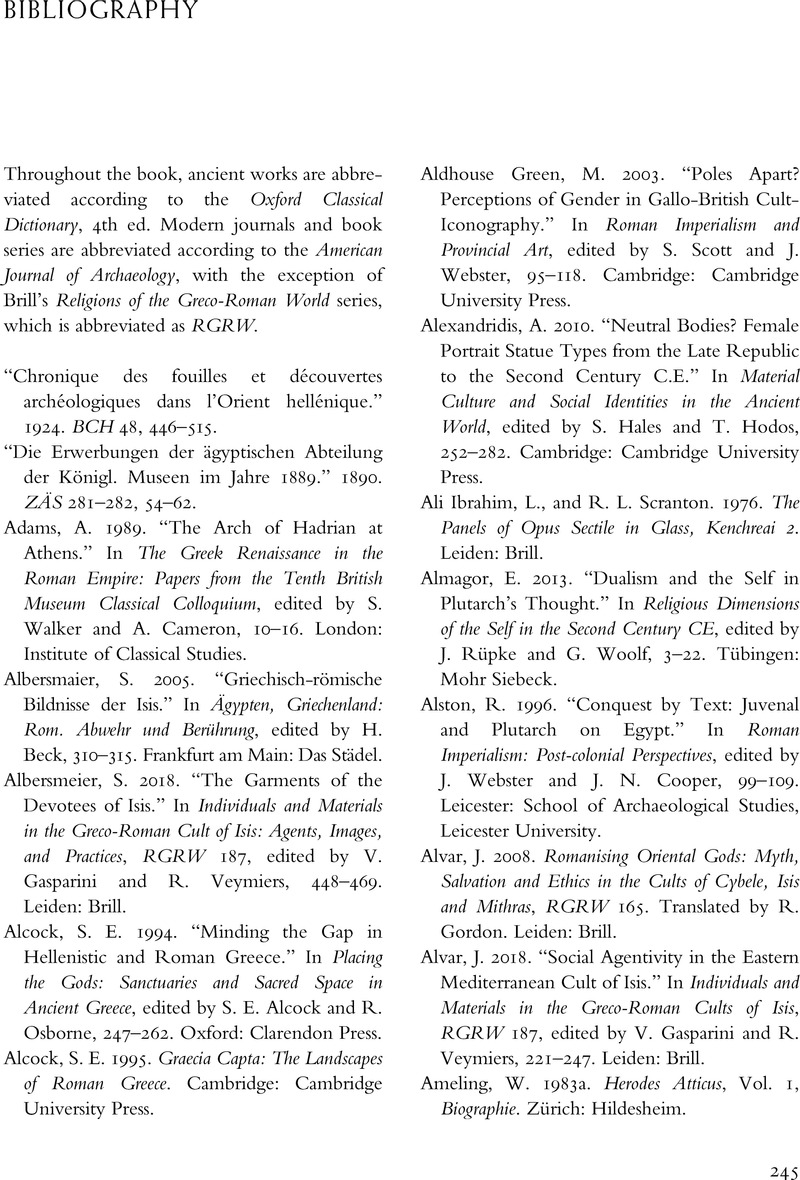Book contents
- Isis in a Global Empire
- Isis in a Global Empire
- Copyright page
- Contents
- Illustrations
- Acknowledgments
- Chapter One Egyptian Religion and the Problem of Greekness
- Chapter Two Building Groupness
- Chapter Three Deterritorializing Theology?
- Chapter Four Self-understanding
- Chapter Five Self-fashioning
- Chapter Six Self-location
- Chapter Seven Conclusion
- Notes
- Bibliography
- Index
- References
Bibliography
Published online by Cambridge University Press: 06 February 2022
- Isis in a Global Empire
- Isis in a Global Empire
- Copyright page
- Contents
- Illustrations
- Acknowledgments
- Chapter One Egyptian Religion and the Problem of Greekness
- Chapter Two Building Groupness
- Chapter Three Deterritorializing Theology?
- Chapter Four Self-understanding
- Chapter Five Self-fashioning
- Chapter Six Self-location
- Chapter Seven Conclusion
- Notes
- Bibliography
- Index
- References
Summary

- Type
- Chapter
- Information
- Isis in a Global EmpireGreek Identity through Egyptian Religion in Roman Greece, pp. 245 - 274Publisher: Cambridge University PressPrint publication year: 2022
References
Bibliography
Throughout the book, ancient works are abbreviated according to the Oxford Classical Dictionary, 4th ed. Modern journals and book series are abbreviated according to the American Journal of Archaeology, with the exception of Brill’s Religions of the Greco-Roman World series, which is abbreviated as RGRW.

